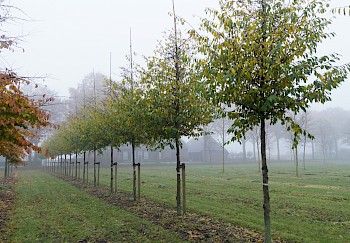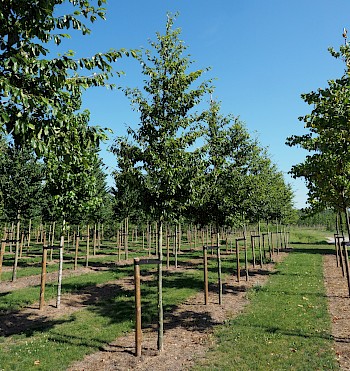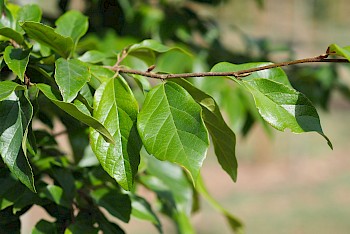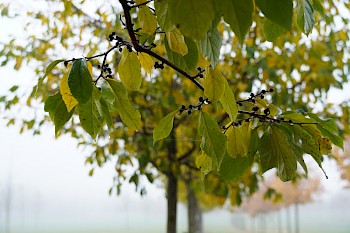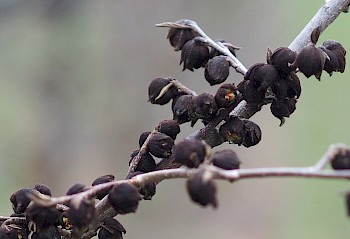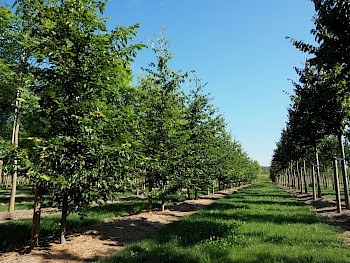8m - 9m
2m - 4m
Leaf, Autumn colour, Shape
February March
yellow-orange-red
Air pollution
Moisture-retaining with well-draining profile
This crossbreed of the Sycopis sinensis and Parrotia persica has resulted in an exceptional tree, with healthy, green leaves that stay until spring. The Sycoparrotia semidecidua ‘Prins Claus’ is a surprising addition to the public green space.
It received its royal name from Piet van der Bom, who, at the time, brought a cutting of the Sycoparrotia from America. The cultivar turned out not to be a fast grower, but it was a super-healthy tree, without issues with disease or insects. Both parents are related to the witch hazel family (Hamamelidaceae). No wonder that there are similarities with the witch hazel, as can be seen in the flowers and leaves. The flower appears the moment the Sycoparrotia semidecidua ‘Prins Claus’ drops its leaves, which is in February/ March. Red, 1 cm flowers grow on the bare wood. After blooming, the shiny, leathery-green leaves slowly appear. The leaves stay until the next bloom, in early spring. In autumn, the foliage turns into a beautiful yellow/ orangey red.
This very winter-hardy tree is super-healthy and will grow to a final height of about 8 m and a width of 2-4 m. The tree does not grow very fast. Like the Parrotia, the Sycoparrotia has a compact cell structure, which does make it rock-solid. Smaller specimens are already more resistant to external influences. The Sycoparrotia semidecidua ‘Prins Claus’ prefers humid soils with a permeable profile. Pavements are no problem, and it can handle air pollution. In its early years, extra attention to trimming is required, as it has a natural tendency to grow into a bush.
